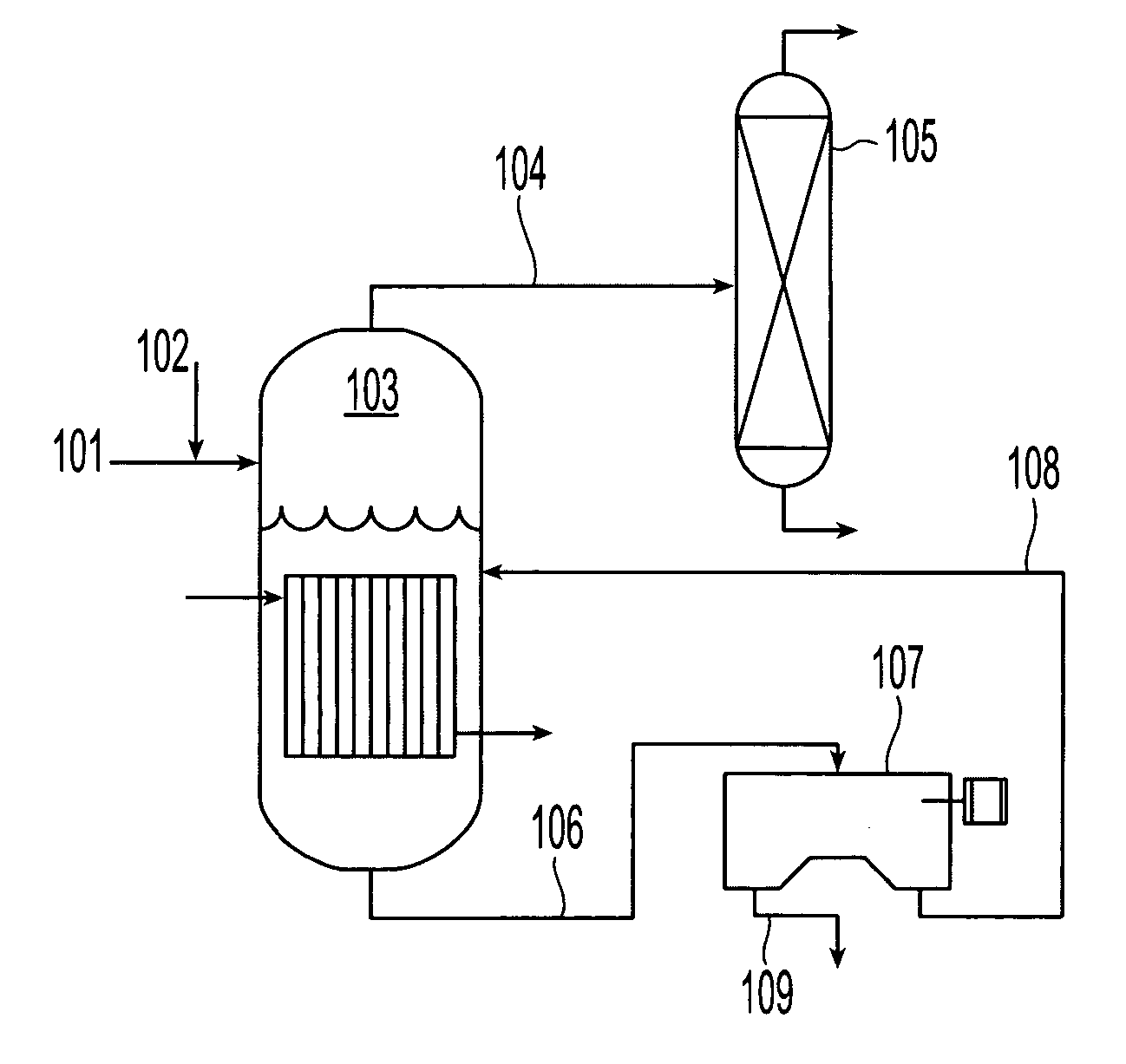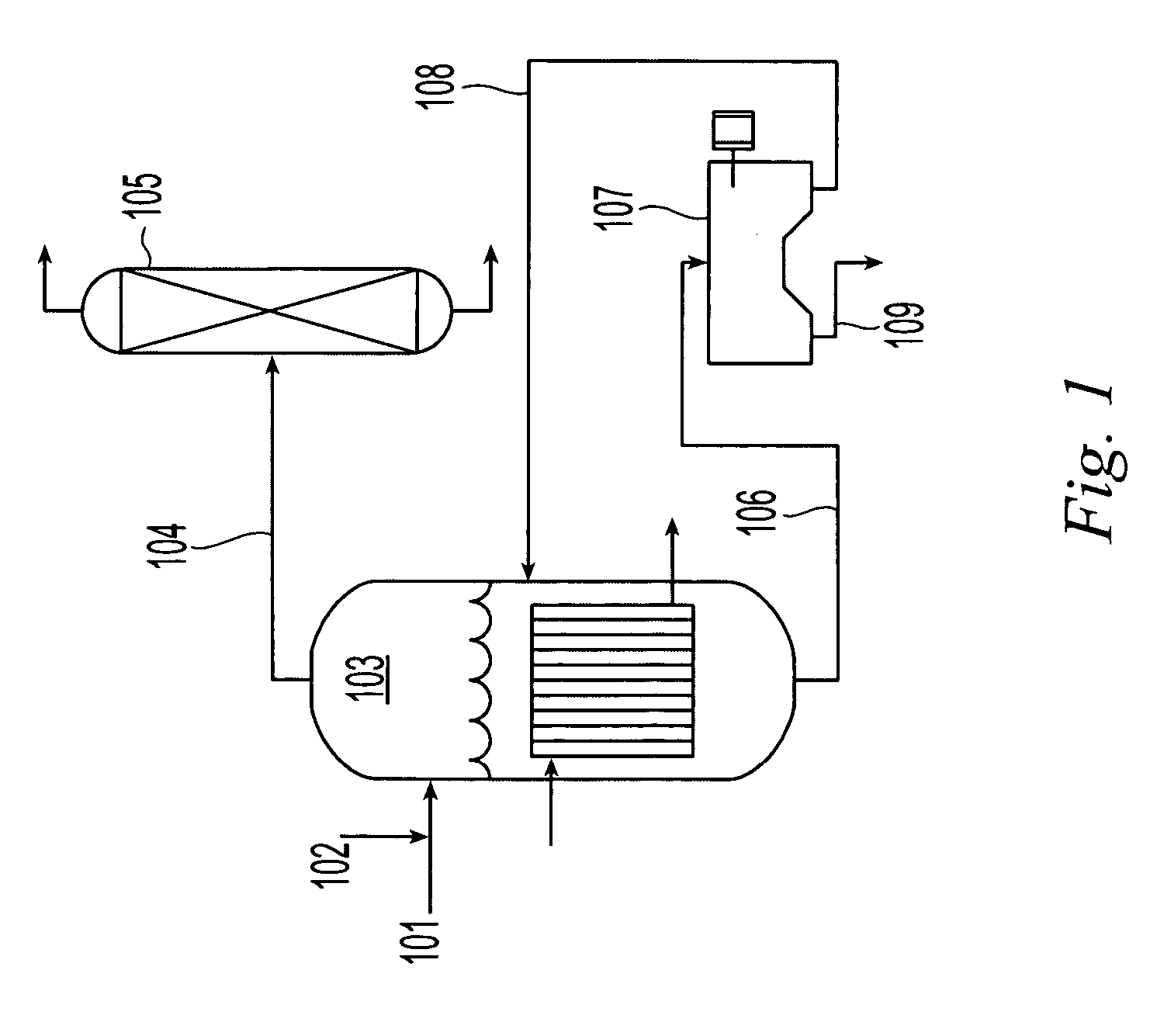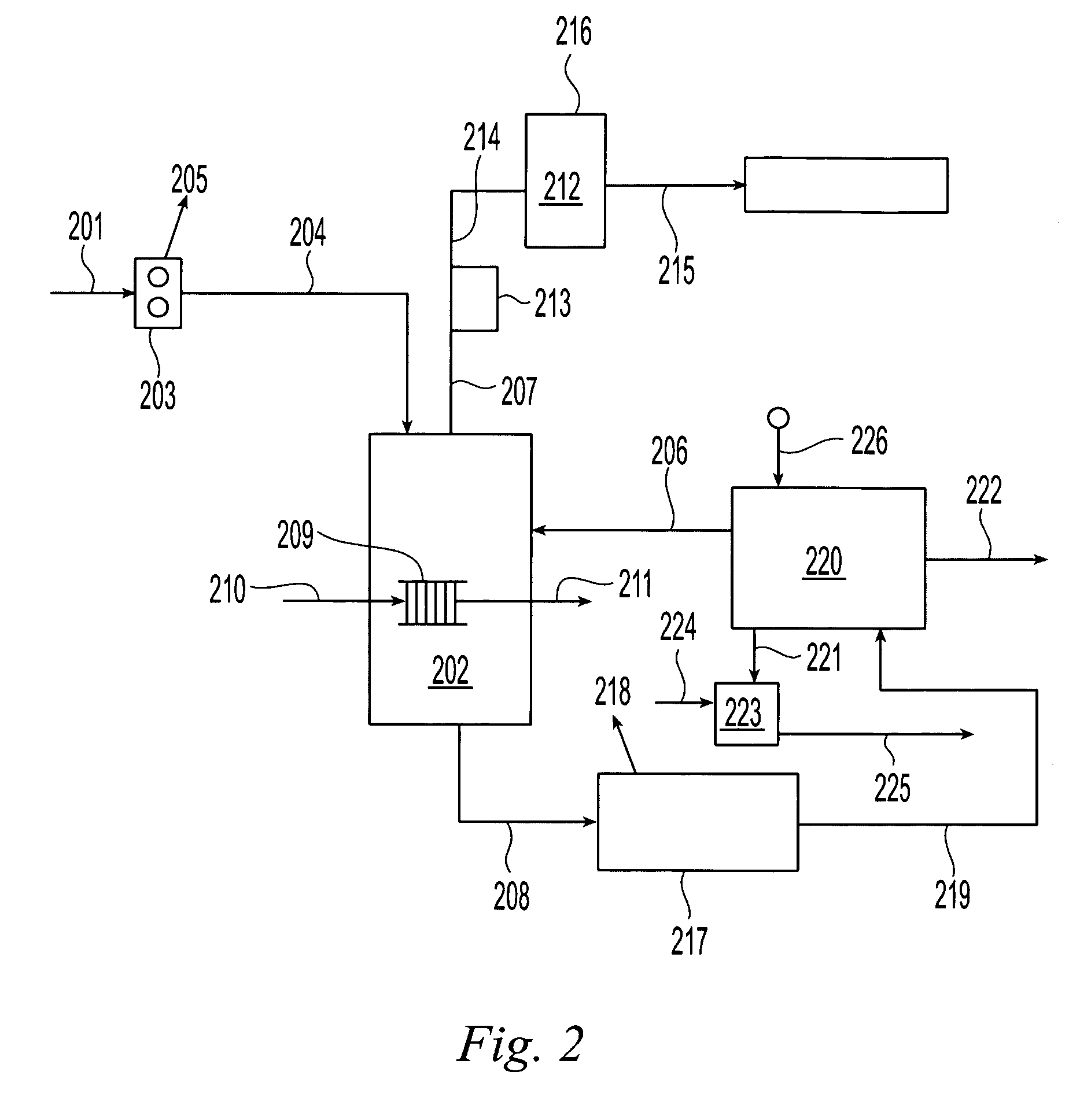Regeneration of cupric etchants and recovery of copper sulfate
a technology of copper sulfate and etchant, which is applied in the direction of inorganic chemistry, dissolving, disinfection, etc., can solve the problems of increasing the cost of shipping and handling, aforementioned references have inherent problems, and the process relating to copper is more complex and complex, so as to achieve the effect of convenient reus
- Summary
- Abstract
- Description
- Claims
- Application Information
AI Technical Summary
Benefits of technology
Problems solved by technology
Method used
Image
Examples
example 1
[0059]A 25 ml cupric chloride solution containing 129-g / L copper and 65-g / L HCl was mixed with 31.3 grams of concentrated sulfuric acid (97% by weight sulfuric acid). This aqueous composition comprised about 0.066 moles copper, 0.177 moles chloride, and 0.31 moles sulfuric acid. The mixture solution, which initially contained about 50% sulfuric acid by weight and between about 35% water by weight, was distilled under a slight vacuum (using a water-pump) at 130° C. for 35 minutes. After the distillation, a light blue-colored solution / crystal mixture was obtained. The mixture was allowed to cool down and then filtered. About 25-ml filtrate and 9.7 gram of light blue-colored copper sulfate crystals were collected. After drying in a 50° C. oven overnight, the crystals (formed from a composition having a molar ratio of sulfate to copper of about 4.7:1, about 50% sulfuric acid and about 35% water at 130° C.) were found to contain 28.3% copper, 1.5% sulfuric acid and 0.5% free moisture. Th...
example 2
[0060]A mixture of 30 ml of a cupric chloride solution (245.4-g / L copper (from copper chloride) and 35-g / L HCl at 1.407 g / cc density) and 42.2 g of sulfuric acid was distilled at 120° C. for 35 minutes under slight vacuum. The composition originally contained 0.116 moles Cu, 0.26 moles Cl, and 0.41 moles H2SO4. About 26 grams of copper sulfate crystals and 38 grams of filtrate were obtained. The crystals contained 28.1% copper, again suggesting the material had about 2.5 parts copper sulfate monohydrate per 7.5 parts of copper sulfate pentahydrate. The filtrate was a light blue solution containing 72.6% by weight sulfuric acid and 5 g / L copper, with a specific gravity of 1.33 g / cc. The recovery of copper as copper sulfate was about 90%.
example 3
[0061]A mixture of 42.2 ml of cupric chloride solution (245.4-g / L copper and 35-g / L HCl at 1.407 g / cc density) and 21.1 grams of sulfuric acid was distilled at 125° C. for 60 minutes under slight vacuum. This composition originally comprised 0.163 moles copper, 0.366 moles Cl, and 0.209 moles sulfuric acid. The initial mixture solution contained about 33% sulfuric acid by weight. A light blue-colored thick solution was obtained after distillation. Upon cooling, the liquid crystallized to form light blue-colored copper sulfate crystals. No filtrate was recovered. The material probably comprised about 20% by weight sulfuric acid, which was not readily separable from the solids.
PUM
| Property | Measurement | Unit |
|---|---|---|
| temperature | aaaaa | aaaaa |
| temperature | aaaaa | aaaaa |
| pressure | aaaaa | aaaaa |
Abstract
Description
Claims
Application Information
 Login to View More
Login to View More - R&D
- Intellectual Property
- Life Sciences
- Materials
- Tech Scout
- Unparalleled Data Quality
- Higher Quality Content
- 60% Fewer Hallucinations
Browse by: Latest US Patents, China's latest patents, Technical Efficacy Thesaurus, Application Domain, Technology Topic, Popular Technical Reports.
© 2025 PatSnap. All rights reserved.Legal|Privacy policy|Modern Slavery Act Transparency Statement|Sitemap|About US| Contact US: help@patsnap.com



